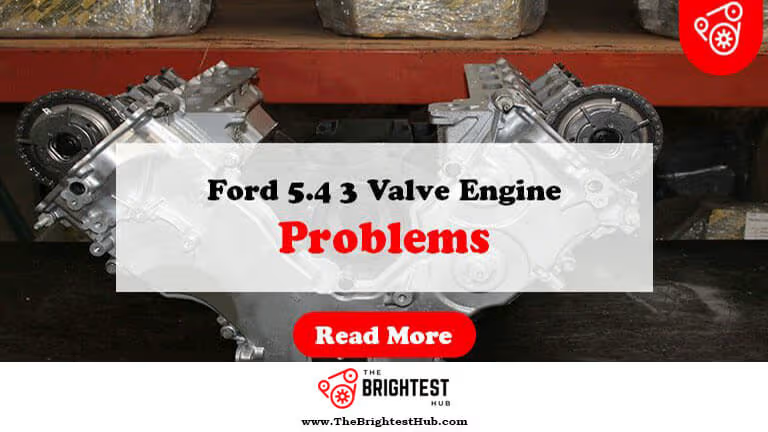Eaton Fuller Automatic Transmission Problems: Quick Fixes
Eaton Fuller automatic transmission problems often include shifting issues, fluid leaks, and overheating. Regular maintenance can help prevent these common issues.
Eaton Fuller automatic transmissions are widely used in heavy-duty trucks and commercial vehicles. Known for their durability, they can still encounter problems over time. Issues can arise from various factors, such as inadequate lubrication, worn components, or improper use. Understanding these potential problems is essential for drivers and fleet managers alike.
Addressing these concerns promptly can enhance performance and extend the lifespan of the transmission. Regular inspections and maintenance routines are crucial. By staying proactive, users can avoid costly repairs and ensure smoother operation. This blog will explore common Eaton Fuller transmission issues and how to address them effectively.
Introduction To Eaton Fuller Automatic Transmissions

Eaton Fuller automatic transmissions are crucial for modern trucks. They provide smooth gear changes and improve driving comfort. These transmissions replace traditional manual systems. This guide explores key aspects of Eaton Fuller automatic transmissions.
The Rise Of Automated Gear Shifting
Automated gear shifting has gained popularity in recent years. Truck drivers prefer it for several reasons:
- Less driver fatigue
- Improved fuel efficiency
- Simplified operation
Eaton Fuller has been a pioneer in this technology. Their systems allow precise shifting without driver input. This innovation enhances safety and performance.
Key Advantages Over Manual Systems
Eaton Fuller automatic transmissions offer several advantages:
| Advantage | Description |
|---|---|
| Ease of Use | Drivers can focus on the road. |
| Fuel Efficiency | Optimized gear shifts enhance fuel savings. |
| Reduced Wear | Minimized strain on engine components. |
| Improved Safety | Less distraction means safer driving. |
These advantages make Eaton Fuller transmissions a popular choice. They meet the demands of modern trucking.
Common Issues With Eaton Fuller Automatics
Eaton Fuller automatic transmissions are popular in heavy-duty trucks. They offer smooth shifting and durability. Despite their reliability, they can experience some common issues. Understanding these problems helps in timely maintenance and repairs.
Gear Slippage And Erratic Shifts
Gear slippage can cause serious problems. Here are some common signs:
- Unexpected changes in gears.
- Engine revs without increasing speed.
- Shifting delays or hesitations.
Erratic shifts can lead to:
- Inconsistent power delivery.
- Increased wear on transmission parts.
Regular maintenance can reduce these issues. Check fluid levels and change filters as needed.
Unexpected Neutral Or Gear Losses
Unexpected neutral or gear loss is alarming. It can occur during driving. Symptoms include:
- Engine running but no power to wheels.
- Warning lights on the dashboard.
This issue can happen due to:
- Low transmission fluid.
- Faulty sensors.
- Worn internal components.
Immediate inspection is crucial. Ignoring this can lead to complete transmission failure.
Delayed Engagement
Delayed engagement is another common problem. It refers to a lag between shifting and movement. Drivers may notice:
- Long pauses before the vehicle moves.
- Harsh or jerky starts.
Causes of delayed engagement include:
- Low transmission fluid.
- Damaged solenoids.
- Internal leaks.
Addressing this issue promptly is essential. It can prevent further damage and ensure smooth performance.
Diagnostic Steps
Diagnosing problems with the Eaton Fuller Automatic Transmission requires careful steps. Each step helps identify issues quickly. Proper diagnosis saves time and money.
Reading Fault Codes
Reading fault codes is a crucial first step. Fault codes provide valuable information about the transmission’s health. Here’s how to do it:
- Connect a diagnostic scanner to the vehicle’s port.
- Turn on the ignition without starting the engine.
- Access the transmission control module (TCM) settings.
- Record the fault codes displayed on the scanner.
Common fault codes include:
| Fault Code | Meaning |
|---|---|
| P0700 | Transmission Control System Malfunction |
| P0715 | Input/Turbine Speed Sensor Circuit Malfunction |
| P0720 | Output Speed Sensor Circuit Malfunction |
Understanding these codes helps narrow down the issue. Always document the codes for reference.
Performing A System Self-test
A system self-test checks the transmission’s components. This test can reveal hidden problems. Follow these steps:
- Ensure the vehicle is in a safe environment.
- Turn on the engine.
- Activate the self-test function via the diagnostic scanner.
- Observe the scanner for any error messages.
Look for results that show:
- Electrical issues
- Fluid pressure problems
- Sensor failures
Document findings for further analysis. This information aids in repairs.
Quick Fixes You Can Try
Facing issues with your Eaton Fuller Automatic Transmission? Don’t worry. Some quick fixes may solve the problem. Here are two effective methods to consider.
Resetting The Transmission System
Resetting your transmission system can often clear minor glitches. Follow these steps:
- Turn off the engine.
- Disconnect the battery for 10 minutes.
- Reconnect the battery.
- Start the engine and allow it to idle.
- Shift through all gears slowly.
This process can help reset any error codes. Monitor the performance after the reset.
Checking And Adjusting Fluid Levels
Proper fluid levels are crucial for transmission health. Follow these steps to check and adjust:
- Park the vehicle on a level surface.
- Start the engine and let it warm up.
- Locate the transmission dipstick.
- Pull out the dipstick and wipe it clean.
- Reinsert it and check the fluid level.
Fluid levels should be between the minimum and maximum marks. If low, add the recommended fluid type. Use the following table for fluid specifications:
| Transmission Model | Recommended Fluid Type |
|---|---|
| Eaton Fuller 10-Speed | Dexron III or Mercon |
| Eaton Fuller 13-Speed | Full Synthetic ATF |
Regularly checking fluid levels can prevent bigger issues. Always ensure the correct fluid type is used.
Electrical Component Troubles
Electrical issues can cause major problems in Eaton Fuller automatic transmissions. These problems often lead to poor performance and increased wear and tear. Identifying and fixing these electrical component troubles is crucial for maintaining your vehicle’s efficiency.
Inspecting The Wiring Harness
The wiring harness connects various electrical components. A damaged or corroded harness can disrupt signals. Here are steps to inspect it:
- Check for visible damage or wear.
- Look for loose connections.
- Inspect for corrosion on terminals.
- Ensure proper insulation to prevent shorts.
Use a multimeter to test continuity. This ensures all connections are working correctly. Replace any damaged wiring immediately.
Solenoid Issues And Solutions
Solenoids control fluid flow in the transmission. Faulty solenoids can cause shifting problems. Watch for these signs:
- Delayed shifts.
- Harsh or erratic shifting.
- Warning lights on the dashboard.
To address solenoid issues:
- Check the electrical connections to the solenoid.
- Test the solenoid’s resistance with a multimeter.
- Replace any faulty solenoids.
Ensure you use OEM parts for replacements. This helps maintain optimal performance.
Software Glitches And Updates
Eaton Fuller automatic transmissions rely on complex software. This software controls shifting patterns and performance. Software glitches can lead to various issues. Regular updates are essential to maintain smooth operation.
Identifying Software-related Problems
Identifying software issues can save time and money. Look for these signs:
- Erratic shifting: Inconsistent gear changes.
- Delayed response: Slow reaction to throttle input.
- Check engine light: Warning signals on the dashboard.
- Unusual noises: Grinding or clunking sounds during shifts.
Use a diagnostic tool to read error codes. This helps pinpoint the exact issue. Early detection prevents further damage.
Updating Transmission Firmware
Updating firmware is crucial for performance. Follow these steps:
- Check the current software version.
- Visit the Eaton website for updates.
- Download the latest firmware.
- Connect the diagnostic tool to the vehicle.
- Upload the new firmware to the transmission.
Benefits of updating:
- Improved performance: Smoother shifting and responsiveness.
- Enhanced safety: Reduces the risk of malfunctions.
- Better fuel efficiency: Optimizes engine performance.
Regular updates keep the transmission running efficiently. Schedule updates as part of routine maintenance.
Mechanical Adjustments
Maintaining the Eaton Fuller Automatic Transmission requires careful mechanical adjustments. Proper adjustments ensure smooth operation and extend the lifespan of the transmission. Neglecting this can lead to significant problems. Let’s explore two critical aspects: linkage checks and adjustments, along with replacing worn-out parts.
Linkage Checks And Adjustments
Linkage plays a vital role in the transmission system. Regular checks can prevent many issues. Here are key steps:
- Inspect the linkage for wear and damage.
- Ensure proper alignment with the transmission.
- Check for any loose connections.
Make adjustments to the linkage as needed:
- Loosen the adjustment nuts.
- Align the linkage correctly.
- Tighten the adjustment nuts.
Following these steps can improve transmission performance significantly.
Replacing Worn-out Parts
Worn-out parts can cause serious transmission issues. Regular inspection helps identify these parts. Common areas to check include:
| Part | Signs of Wear |
|---|---|
| Torque Converter | Slipping or shuddering |
| Seals | Fluid leaks |
| Clutch Plates | Grinding noises |
Replace any worn-out parts immediately. This will enhance performance and prevent further damage.
When To Seek Professional Help
Understanding when to get professional help for your Eaton Fuller automatic transmission is crucial. Ignoring issues can lead to severe damage. Act promptly to avoid costly repairs.
Recognizing Complex Transmission Issues
Some problems require expert attention. Here are signs that indicate complex transmission issues:
- Strange noises: Grinding or clunking sounds.
- Slipping gears: Loss of power during acceleration.
- Fluid leaks: Puddles of transmission fluid under your vehicle.
- Warning lights: Transmission or check engine light on.
- Poor shifting: Delayed or rough gear changes.
Noticing any of these signs means you should seek help. Delaying action can worsen the problem.
Benefits Of Certified Technicians
Certified technicians offer numerous advantages. Here are some key benefits:
| Benefit | Description |
|---|---|
| Expert knowledge | They understand Eaton Fuller systems thoroughly. |
| Proper tools | They use specialized tools for accurate diagnostics. |
| Quality parts | They install reliable, high-quality replacement parts. |
| Warranty protection | Work often comes with warranties for peace of mind. |
Choosing certified technicians ensures quality service. Trust their expertise for your transmission issues.
Preventative Maintenance Tips
Taking care of your Eaton Fuller Automatic Transmission can prevent issues. Regular maintenance keeps your vehicle running smoothly. Follow these tips for a longer transmission life.
Regular Service Intervals
Scheduling regular service is crucial. Here are some recommended intervals:
| Service Type | Interval |
|---|---|
| Fluid Change | Every 30,000 miles |
| Filter Replacement | Every 60,000 miles |
| Full Inspection | Every 100,000 miles |
Sticking to these intervals helps catch problems early. Check your owner’s manual for specific recommendations.
Best Practices For Transmission Care
- Monitor Fluid Levels: Check regularly for low fluid.
- Use the Right Fluid: Only use fluids specified by the manufacturer.
- Avoid Overloading: Don’t exceed the vehicle’s weight limit.
- Keep it Clean: Maintain cleanliness around the transmission.
- Watch for Warning Signs: Listen for unusual noises.
These practices help maintain your transmission’s health. Address any issues immediately. Regular checks can save you from costly repairs.
Frequently Asked Questions
What Are Common Eaton Fuller Transmission Issues?
Common issues include slipping gears, rough shifting, and fluid leaks, which can impact performance and reliability.
How To Diagnose Eaton Fuller Transmission Problems?
Check for warning lights, listen for unusual noises, and monitor fluid levels to identify potential issues.
Can Eaton Fuller Transmission Be Repaired?
Yes, many problems can be repaired, but some may require a complete rebuild or replacement.
What Maintenance Is Needed For Eaton Fuller Transmissions?
Regular fluid changes, inspections, and adjusting settings can help prevent major issues and extend the transmission’s lifespan.
Where To Find Eaton Fuller Transmission Parts?
Parts can be sourced from authorized dealers, online retailers, or specialized auto parts stores for better availability.
Conclusion
Eaton Fuller automatic transmissions can face several issues that affect performance. Regular maintenance and timely repairs are crucial. Understanding common problems helps you address them before they escalate. Always consult a professional for thorough diagnostics. Stay informed to keep your transmission running smoothly and efficiently for years to come.






